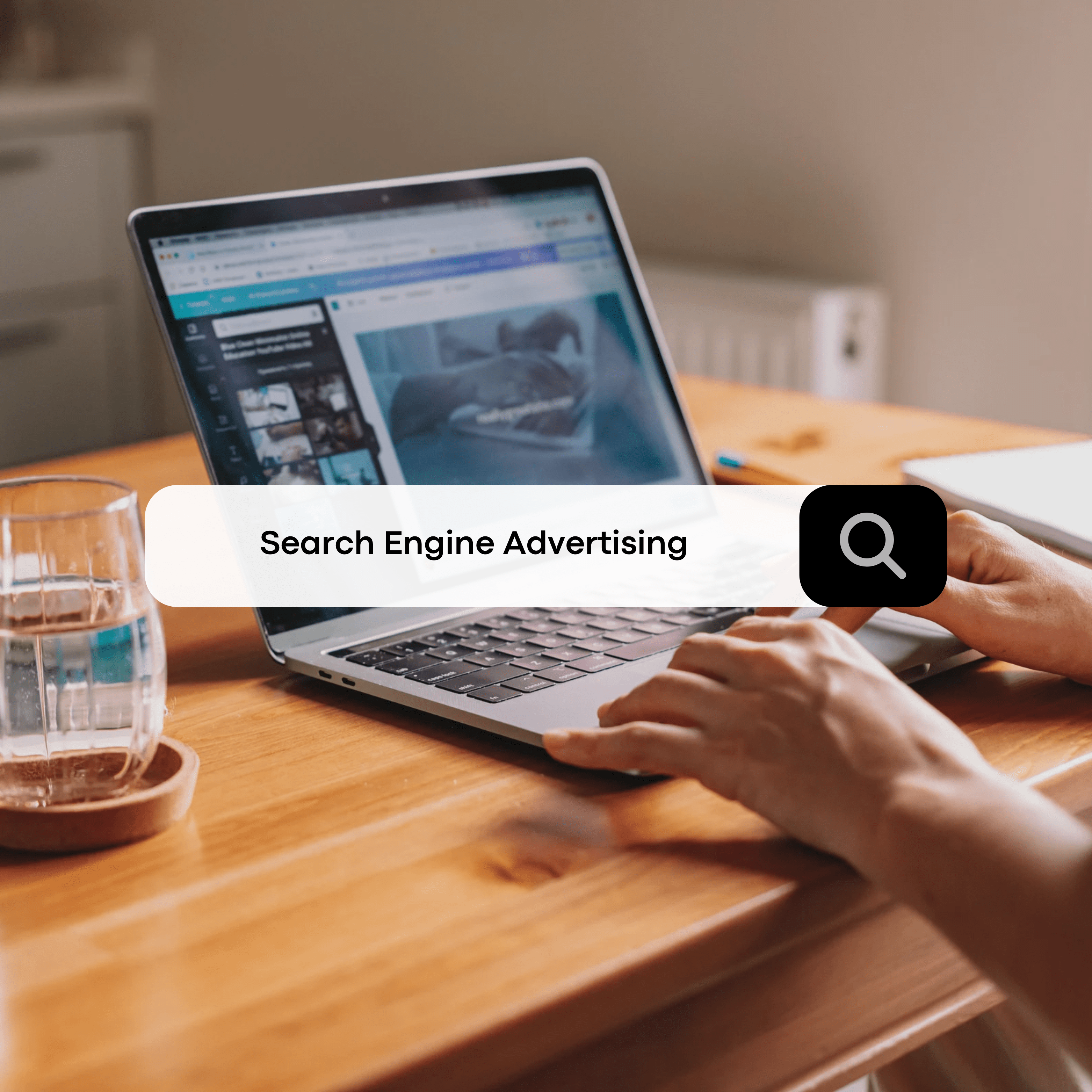Search Engine Advertising: A Complete Guide to Paid Search Success
What is Search Engine Advertising?
Search Engine Advertising (SEA) is a digital marketing strategy where businesses pay to display their ads on search engine results pages (SERPs).
These ads appear at the top or bottom of search results when users enter specific keywords. SEA works on a pay-per-click (PPC) model, meaning advertisers pay only when someone clicks on their ad.
Popular search engines like Google, Bing, and Yahoo offer paid advertising platforms, with Google Ads being the most widely used.
Why is Search Engine Advertising Important?

How Does Search Engine Advertising Work?
Types of Search Engine Advertising
Search Engine Advertising (SEA) includes various ad formats that help businesses target potential customers through search engines like Google and Bing. Here are the main types of search engine advertising:
1. Pay-Per-Click (PPC) Advertising
- The most common form of SEA where advertisers bid on keywords, and they pay only when a user clicks on their ad.
- Example: Google Ads (Search Ads), Bing Ads
- Best for: Driving traffic and conversions quickly
2. Cost-Per-Thousand Impressions (CPM) Advertising
- Advertisers pay a fixed rate for every 1,000 times their ad is displayed, regardless of clicks.
- Best for: Brand awareness campaigns
3. Shopping Ads (Product Listing Ads – PLAs)
- These ads display product images, prices, and store names directly on search results.
- Example: Google Shopping Ads
- Best for: E-commerce businesses looking to showcase products visually
4. Display Advertising
- These are visual ads (banners, images, or videos) that appear on Google Display Network (GDN) partner websites.
- Best for: Brand visibility, remarketing, and engaging potential customers
5. Remarketing Ads
- Targets users who have previously visited your website, reminding them to return and complete an action (purchase, sign-up, etc.).
- Example: Google Ads Remarketing
- Best for: Boosting conversions by re-engaging past visitors
6. Video Ads (YouTube Ads)
- Video-based ads displayed on YouTube and other Google video partner sites.
- Example: YouTube Ads (In-stream, Bumper, and Discovery Ads)
- Best for: Engaging audiences through video storytelling
7. Local Search Ads
- Paid search ads that help businesses appear in Google Maps and local search results.
- Example: Google My Business Ads
- Best for: Local businesses targeting nearby customers
How to Create a Successful Search Engine Advertising Strategy?
A well-planned Search Engine Advertising (SEA) strategy helps businesses maximize their ad performance, increase visibility, and drive conversions. Here’s a step-by-step guide to creating a successful SEA strategy:
1. Define Your Goals
Before starting your campaign, identify what you want to achieve:
- Increase website traffic
- Generate leads or sales
- Improve brand awareness
- Retarget previous visitors
Having clear objectives will help you choose the right ad format and optimize your campaign effectively.
2. Choose the Right Platform
Select a search engine advertising platform based on your target audience:
- Google Ads – Best for reaching a large audience across Google Search, YouTube, and partner sites.
- Microsoft Advertising (Bing Ads) – Ideal for businesses targeting Bing and Yahoo users.
- Amazon Ads – Great for e-commerce businesses selling on Amazon.
3. Conduct Keyword Research
- Use tools like Google Keyword Planner, SEMrush, or Ahrefs to find high-performing keywords.
- Focus on commercial intent keywords (e.g., “Buy running shoes online”).
- Include long-tail keywords to target specific audiences and reduce competition.
4. Create High-Quality Ad Copy
- Write compelling headlines that grab attention.
- Include a strong call-to-action (CTA) (e.g., “Shop Now,” “Get a Free Quote”).
- Use ad extensions like call buttons, site links, or location details to improve visibility.
5. Optimize Landing Pages
- Ensure your landing page matches the ad content and provides a smooth user experience.
- Use fast-loading, mobile-friendly pages with clear CTAs.
- Add trust signals like customer reviews and security badges to build credibility.
6. Set Up Targeting & Budgeting
- Geo-targeting – Focus on specific locations where your audience is present.
- Device targeting – Optimize ads for mobile, desktop, or tablet users.
- Bidding strategy – Choose between manual bidding (full control) or automated bidding (AI-driven optimization).
7. Use A/B Testing
- Run multiple ad variations to test different headlines, descriptions, CTAs, and keywords.
- Analyze performance and keep the best-performing ad creatives.
8. Implement Remarketing Campaigns
- Retarget visitors who didn’t convert on their first visit.
- Offer special discounts or reminders to encourage them to return.
9. Monitor and Optimize Performance
- Track key metrics like CTR (Click-Through Rate), CPC (Cost Per Click), and Conversion Rate.
- Adjust bids, refine keywords, and tweak ad copy based on performance data.
- Use analytics tools like Google Ads Manager and Google Analytics to measure success.
10. Stay Updated & Adapt
- Keep up with search engine algorithm updates and industry trends.
- Experiment with new ad formats and audience targeting techniques for continuous improvement.
By following these steps, you can create a high-performing search engine advertising strategy that drives results while optimizing your ad spend.
FAQs About Search Engine Advertising
Conclusion
Search Engine Advertising is a powerful way to increase visibility, drive traffic, and generate leads quickly.
By leveraging PPC, shopping ads, and remarketing strategies, businesses can effectively reach their target audience.
With the right approach, SEA can deliver high ROI and complement long-term SEO efforts.
